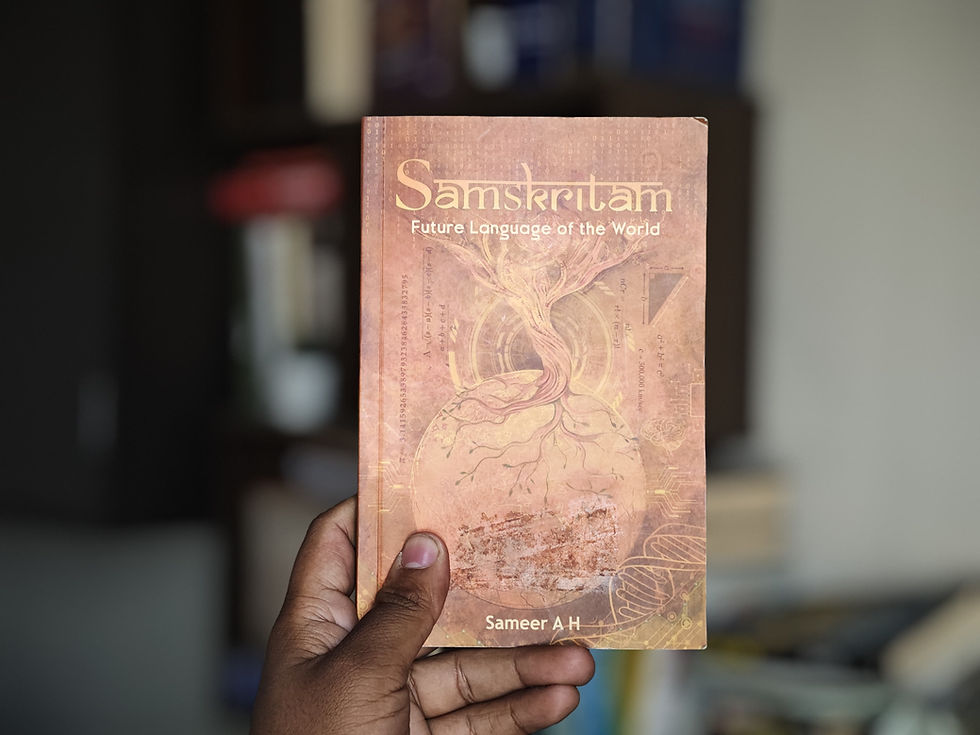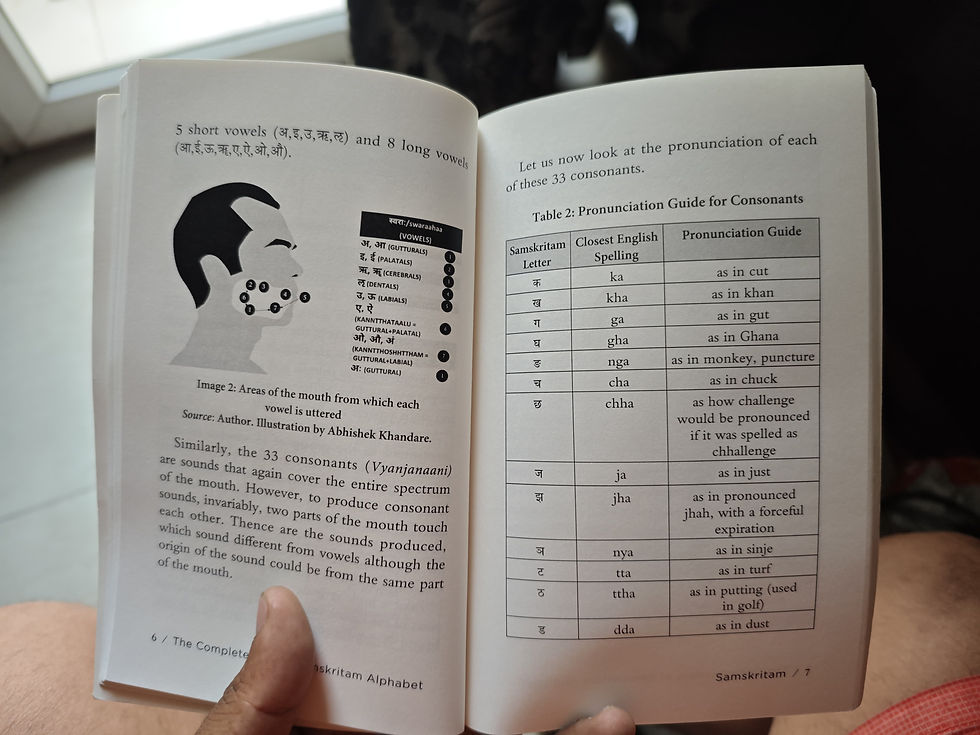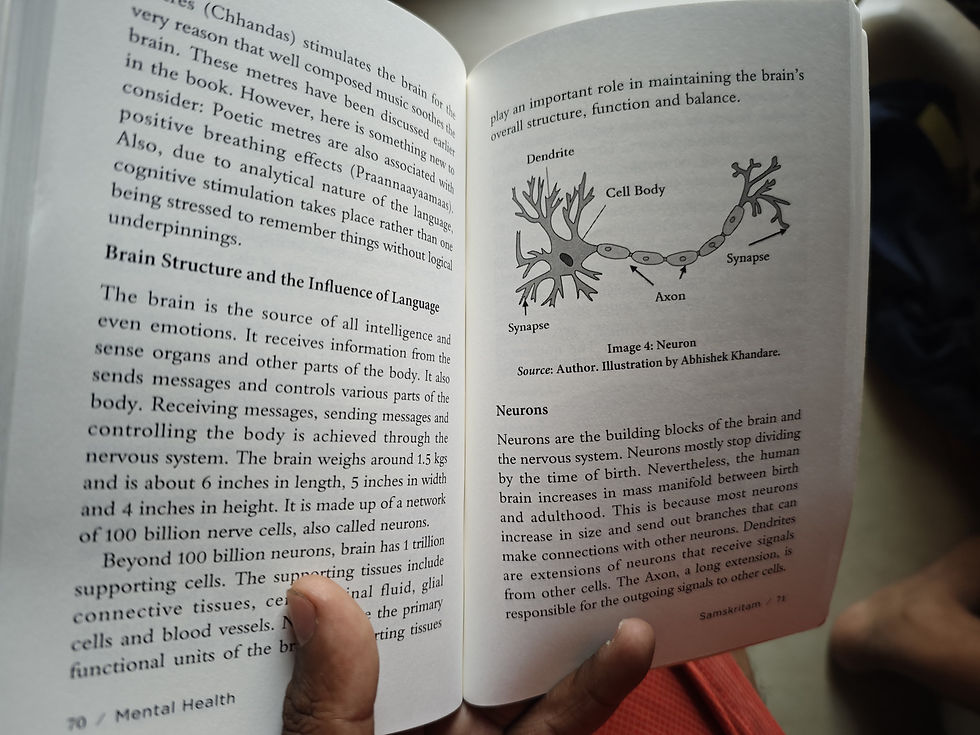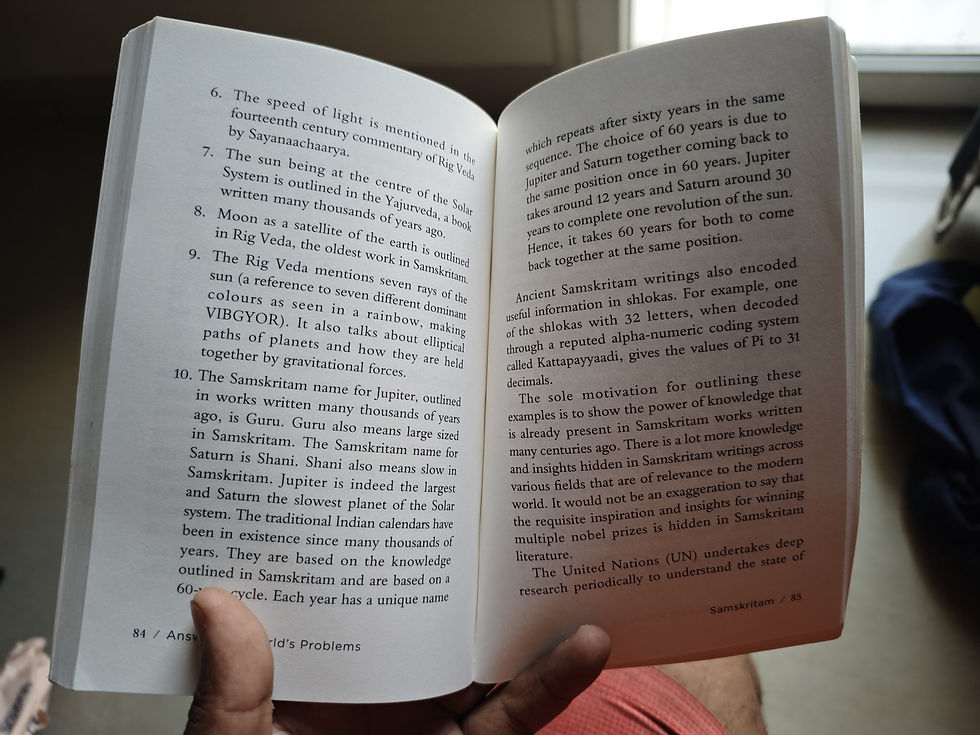
In an age dominated by artificial intelligence, rapid globalization, and a rising consciousness about sustainable living, it’s rare to come across a book that brilliantly bridges ancient wisdom with futuristic thinking. Samskritam: Future Language of the World by Sameer A H is exactly that: a groundbreaking, inspiring, and intellectually invigorating exploration of how Samskritam (Sanskrit) is uniquely poised to become the world’s most efficient and harmonious language.
The book argues that Samskritam is already the world’s most efficient and harmonious language—the real effort lies in making this known to the world and commencing a debate on whether it is the most suitable language to be the world’s first language. The central thesis of the book is that if English were to be replaced with Samskritam as the language of education and work, the world would prosper in a significant way.
The journey begins with a deeply relatable moment—a father helping his son with confusing English spellings—and leads into a discovery of Samskritam’s elegant phonetic design. From the very first page, the book’s approach is inclusive, engaging, and refreshingly honest. It doesn't tear down English or other world languages, but rather elevates Samskritam as a powerful alternative worth celebrating and adopting.

One of the standout strengths of the book is its emphasis on Samskritam’s precision and conciseness. Through comparisons, data-backed insights, and practical examples, it illustrates how Samskritam reduces mental load, eliminates ambiguity, and increases clarity—attributes sorely needed in today's complex communication landscape. With just one Samskritam composite word, entire English phrases can be translated, thereby saving time, space, and cognitive effort.
Scientifically, the book highlights how switching from English to Sanskrit could be a significant catalyst in achieving 11 out of the 17 Sustainable Development Goals (SDGs) that most nations have identified as key milestones for the future. The structured nature of Samskritam enables efficient communication, reduces misinterpretations, and fosters intellectual clarity—all crucial for global development.

The book also brings to light how Samskritam is inherently logical, deeply structured, and remarkably scientific. Its alignment with the human vocal tract, its methodical arrangement of alphabets, and its powerful grammatical tools like sandhi, samaasa, vibhakati, lakāra, etc., demonstrate that this language wasn’t merely formed—it was engineered. For lovers of logic, students of science, and seekers of truth, this book makes a compelling case.
But the most heartwarming and hope-inducing parts of the book are where Samskritam is shown to benefit not only the intellect but also the soul. The language’s rhythm, structure, and poetic nature are shown to have therapeutic effects—supporting memory, reducing stress, and potentially even mitigating cognitive decline. As a parent, educator, or mental health advocate, this opens new doors for holistic learning.
The book doesn’t stop at theoretical ideals. It proposes practical steps for gradual adoption, from integrating Samskritam into school curricula to leveraging it in digital and AI platforms. It envisions a future where the world doesn’t abandon its linguistic roots but instead returns to a language built on harmony, logic, and universal accessibility. Furthermore, the book emphasizes that Sanskrit has vast commonalities and historical linkages with most of the world’s languages, making it easier for the global population to learn it.

At a time when identity, language, and culture often divide us, Samskritam: Future Language of the World serves as a unifying force. It honors the ancient without being nostalgic, and it looks to the future without losing cultural essence. Its vision is optimistic, bold, and entirely achievable—if we choose to engage with it.
In sum, Samskritam: Future Language of the World is a visionary work that will resonate with anyone who believes in smarter education, cleaner technology, and a more peaceful global society. It is a book not just to read, but to revisit, to share, and to reflect upon. Samskritam isn’t just a language—it’s a gift from the past with immense value for the future. And thanks to this book, that future feels a little closer, a little clearer, and a lot more hopeful.
Purchase Link: https://amzn.to/3FJVjYV
Comments